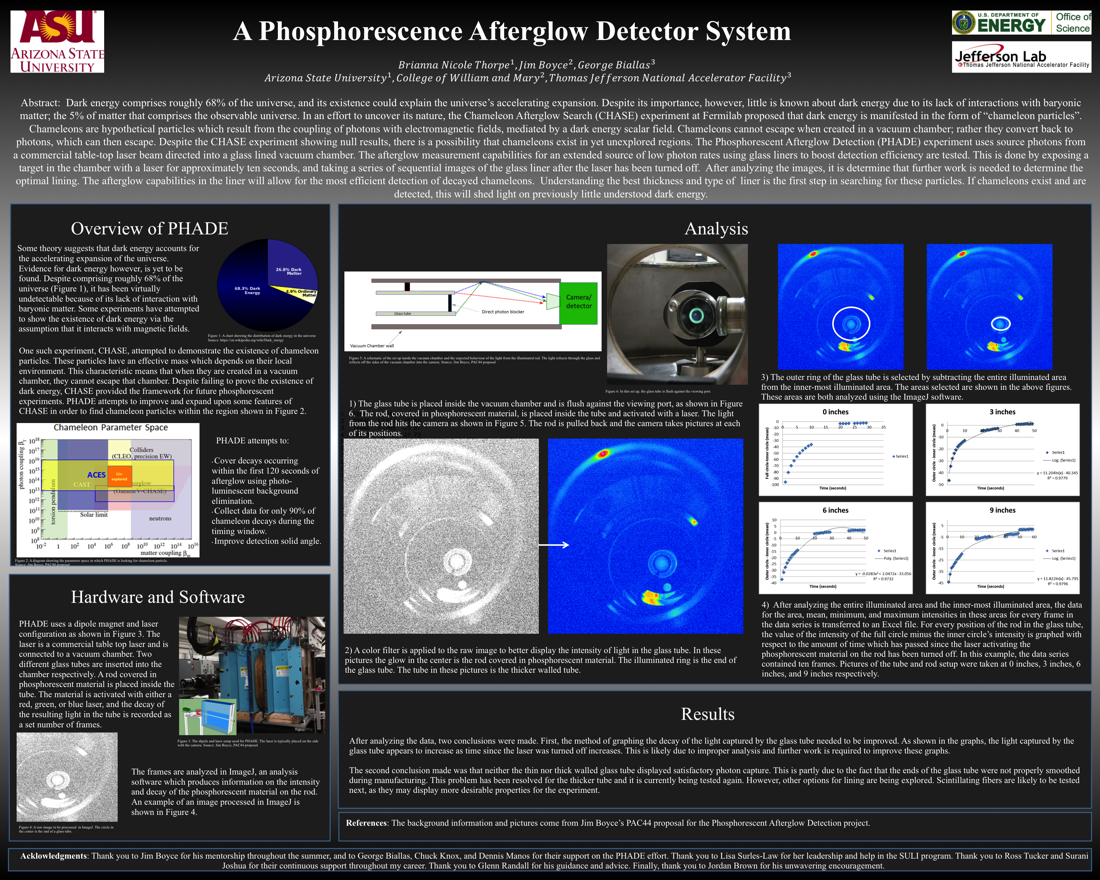Undergraduate Research at Jefferson Lab
A Phosphorescent Detector System
Student: Brianna Thorpe
School: Arizona State University
Mentored By: Jim Boyce
Little is known about dark energy due to its lack of interactions with baryonic matter; the 5% of matter that comprises the observable universe. In an effort to uncover its nature, the Chameleon Afterglow Search (CHASE) experiment at Fermilab proposed that dark energy is manifested in the form of "chameleon particles" which result from the coupling of photons with electromagnetic fields, mediated by a dark energy scalar field. Despite the CHASE experiment showing null results, there is a possibility that chameleons exist in yet unexplored regions. The Phosphorescent Afterglow Detection (PHADE) experiment uses source photons from a table-top laser beam directed into a glass lined vacuum chamber. The afterglow measurement capabilities for an extended source of low photon rates using glass liners to boost detection efficiency are tested. It is shown that further work is required to determine the optimal lining. The afterglow capabilities in the optimal lining will allow for the most efficient detection of decayed chameleons. Understanding the best thickness of liner is the first step in searching for these particles. If chameleons exist and are detected, this will shed light on the previously little understood problem of dark energy.

Citation and linking information
For questions about this page, please contact Education Web Administrator.
